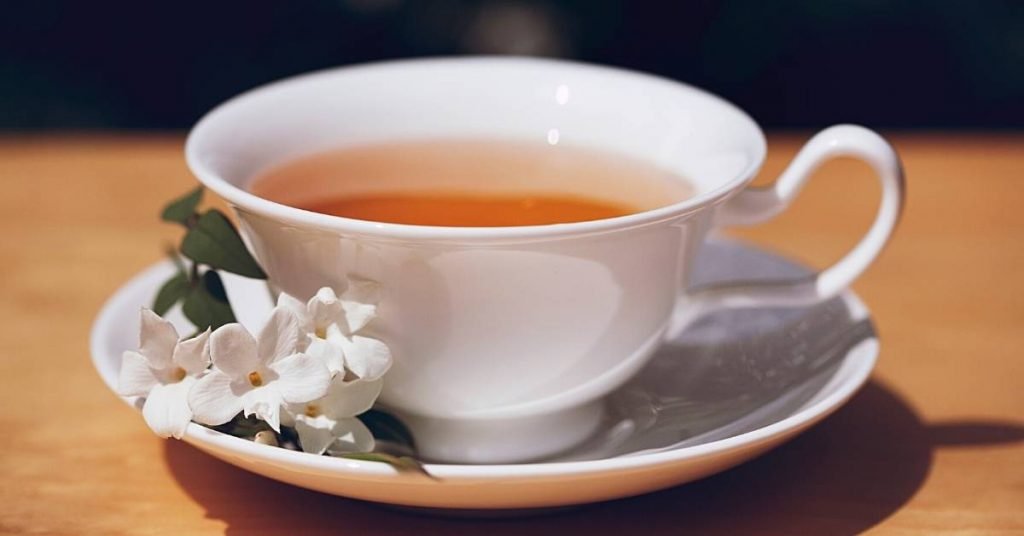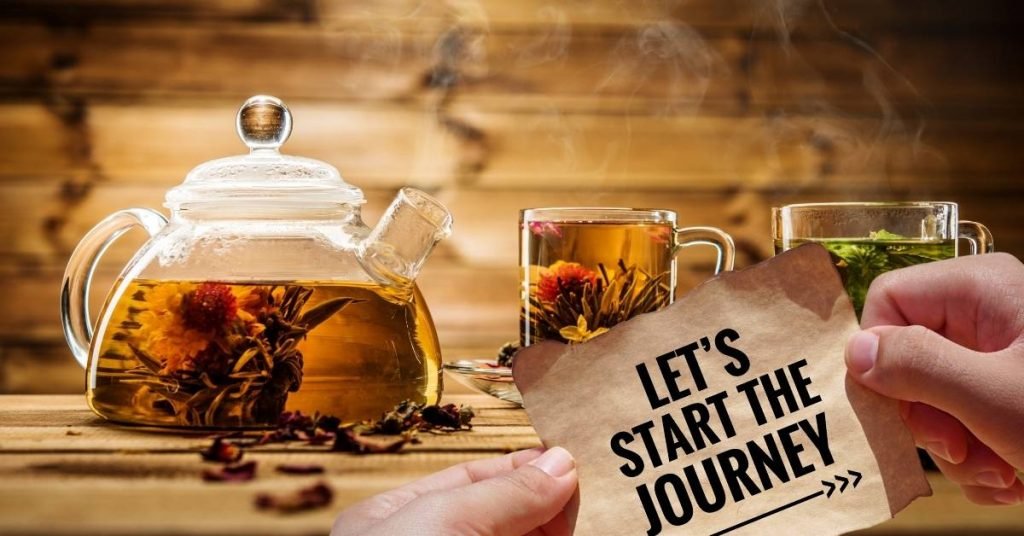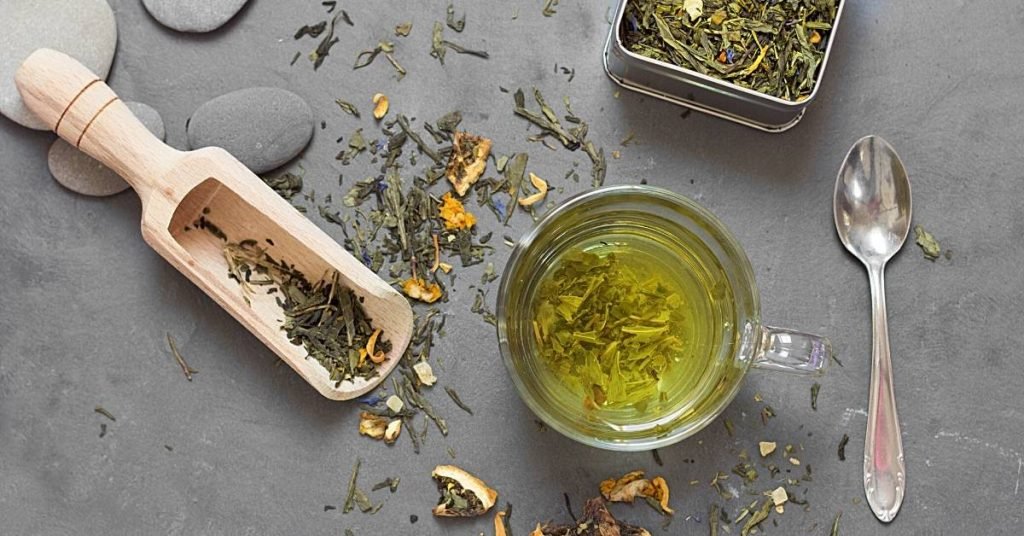If you thought black tea packs a punch, wait until you find out about another type of tea known as green tea. Green tea has a double identity, one of which most of us are unaware of. This “other” entity hides behind a veil that fools us into thinking it is oh so mild and delicate.
Beware because once you take that first sip, a powerhouse of something unexpected begins to flood your body!
You too can explore different green teas and other teas with Hummingbird Tea Room & Bakery’s monthly tea journey. Best of all is it’s delivered right to your front door!
What Is Green Tea?
Green tea is the purest form of tea because it does not go through oxidation or additional processing that other teas (especially black tea) do. It is perhaps the closest thing you’ll get to an unadulterated natural tea. Green tea makes up the largest group of tea types and comes in hundreds of varieties.
Many tea drinkers opt for green tea because it’s the most beneficial type of tea among all teas. It’s how green tea is processed that protects the integrity of the tea leaf, which in turn is responsible for preserving beneficial polyphenols, flavonoids, and catechins.
Where Did Green Tea Come From?
Whether it’s green, black, oolong, yellow, or white, tea begins its journey through the sprouting of new tea leaves on the tea plant (Camellia sinensis.) Various tea plantations scattered throughout the world grow these tea plants with a very precise goal in what type of tea they will make.
Green tea makes up for the largest portion of the tea industry, with black coming in second. The majority of green tea is grown in Asia; however, other countries such as Africa, India, Nepal, and the U.K. also grow and process it.
How Green Tea Is Processed
Let’s take a look at the journey of green tea from the moment the tea leaf is picked to the moment it is packaged and off to market.
Harvesting (Plucking)
The harvesting (known as a “flush” in the tea industry) and minimal processing methods are what produce green tea. Unlike black tea or any other type of tea, it’s the lack of doing too much to the harvested tea leaves that make this tea as pure as it is.
Plucking is the first step in harvesting the tea leaves. Pickers go out into the tea fields (during a flush,) where they hand pluck buds/tea leaves which are then placed into a basket. Once the harvesting is completed, the baskets full of tea buds/leaves are taken back to a processing plant.
Flushes play a significant role in the taste of green tea. The first flush of any tea is always considered the premier and most prized tea. It is purest in taste, offers the most health benefits, contains the highest amount of caffeine, and unfortunately, costs the most.
Why Countries Harvest By Flushes
Not all countries have flushes; some harvest year-round because of a conducive climate. However, in countries where seasons limit harvesting, flushes are followed. Flushes produce a certain quality of tea.
1st Flush
Premium tea
Cost: Most expensive
Flavor: mild, sweet
Astringency: lowest
Caffeine: highest
Health Benefits: highest
- Newly sprouted leaf buds are plucked. These tender leaves are the ones that have been dormant all winter.
- These new leaf buds are the sweetest and contain the least amount of tannins.
2nd Flush
High-quality tea
Cost: Expensive
Flavor: stronger
Astringency: mild
Caffeine: high
Health Benefits: high
- Some leaf buds are still remaining. The bud and a few of the first leaves are plucked.
3rd Flush
Inexpensive tea
Cost: Inexpensive
Flavor: mild to bitter
Astringency: high
Caffeine: low
Health Benefits: low
- This is the busiest harvest because the tea leaves are taking off in abundance.
- Tea leaves plucked during this flush go on to be infused to offset the bitter astringency.
4th Flush
Affordable tea
Cost: Cheap
Flavor: diluted
Astringency: highest
Caffeine: lowest
Health Benefits: lowest
- There is still quite a bit to harvest.
- The tea leaves are mature, which produces a “bite” in taste.
- Tea leaves plucked during this flush go on to be infused or blended in with other teas.
Flushes in China, Japan, and Korea occur at different times than other parts of the world, such as India, the U.K., or Africa. Asian cultures harvest tea according to the lunisolar calendar. For those of us who may not be acquainted with Asian culture as it relates to the lunisolar calendar, it can be confusing to understand how tea is harvested according to lunisolar terms and numerical terms.
Chinese Flush
Tea plantations in China typically follow the lunisolar calendar to harvest tea. However, it’s not uncommon for teas grown at higher elevations to be harvested at other times.
Ming Quian
(1st flush)
“Before the Quian Festival”
Early April
Yu Quian
(2nd flush)
“Before the Rain”
Mid to Late April
Gu Yu
(3rd flush)
Late Spring
Early May
Li Xia
(4th flush)
Summer
Late May
Japanese Flush
Japan has their own harvest periods that occur from April until October.
Sincha / Ichibancha
(1st flush)
Known as “New Tea” and “First Tea”
April – May
Nibancha
(2nd flush)
Known as “Second Tea”
June – July
Sanbancha
(3rd flush)
Known as “Third Tea”
August
Yonbancha
(4th flush)
Known as “Fourth Tea”
September – October
Korean Flush
South Korea also follows the lunisolar calendar like China; however, their specific harvest date is planned according to solar terms that fall under the lunisolar calendar.
Ujeon
(1st flush)
“Gogu” lunisolar calendar
April
Sejak
(2nd flush)
“Ipha” lunisolar calendar
Early May
Jungjak
(3rd flush)
“Soman” on lunisolar calendar
Late May
Daejak
(4th flush)
Summer
India And Nepal Flush
1st Flush
April
Second Flush
June
Monsoon (3rd Flush)
August
Autumnal (4th Flush)
November
Withering, Fixing, Rolling, Drying, Sorting & Grading, And Packaging
The numerous steps and behind-the-scenes mechanics of how green teas are processed are complex and challenging to understand. To simplify things, we have a flowchart that walks you through the moment a tea leaf is picked all the way to packaging.

Types Of Green Tea
There are more varieties of green tea than we can possibly list. The different ways that green teas are processed, various infusions, blends with other tea, and brewing methods are what provides the multiple dimensions of flavor, aroma, and overall benefits that green tea is known for.
For example, Hojicha green tea gets its well-known smoky flavor from it being roasted over a fire. Green jasmine tea is painstakingly infused over months and months with infusions of fresh jasmine flowers to give it the lovely floral aroma and fragrance.

What Is The Best Green Tea?
Deciding on what is best in green teas is subjective and comes down to personal preference. One tea drinker may want a super-earthy tasting green tea such as matcha, whereas another may want a completely different flavor. It all comes down to choosing the right tea for you.
So, how do you choose a good green tea? We can give you some green tea specifics that will help guide you in the right direction. The wonderful thing about teas is you have the freedom to explore all types.

Have you thought about beginning a tea journey into trying different types and varieties of teas?
The perfect solution: A monthly tea journey for those new to exploring different teas (delivered right to your front door!)

A Few Green Tea Specifics
When shopping around for a good green tea, there are a few things to keep in mind. A good quality green tea will have the origin noted on the packaging. If you don’t see this information on the package, chances are the tea is of poor quality. Loose leaf tea is the best way to experience any tea at its best because the grade of tea is of better quality.


